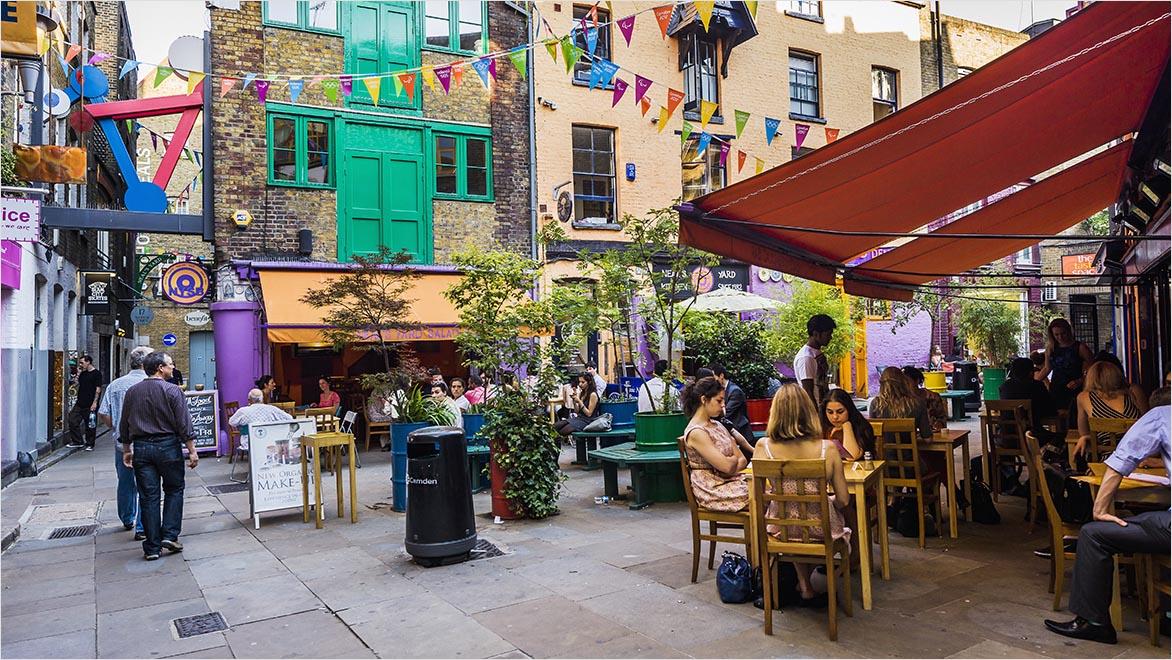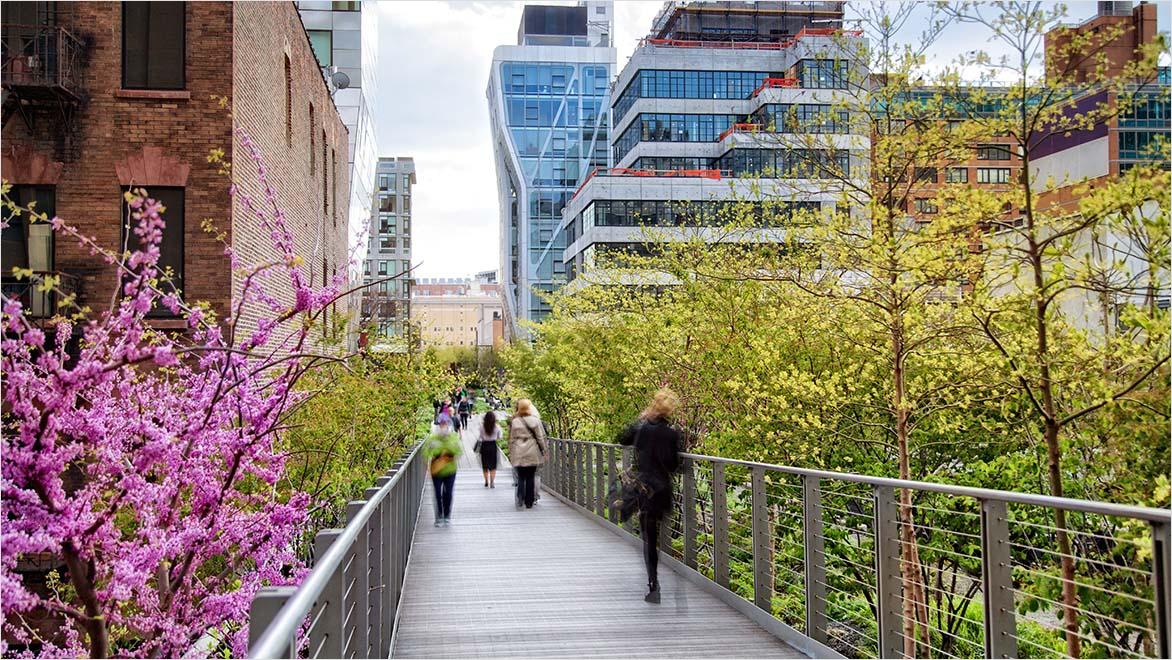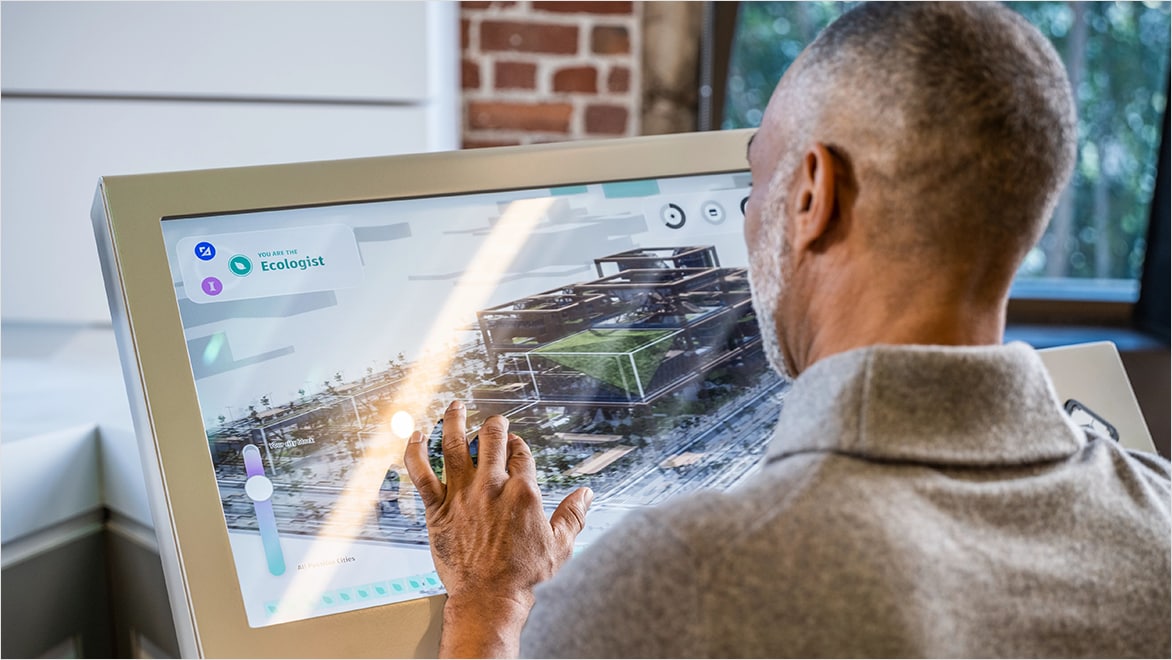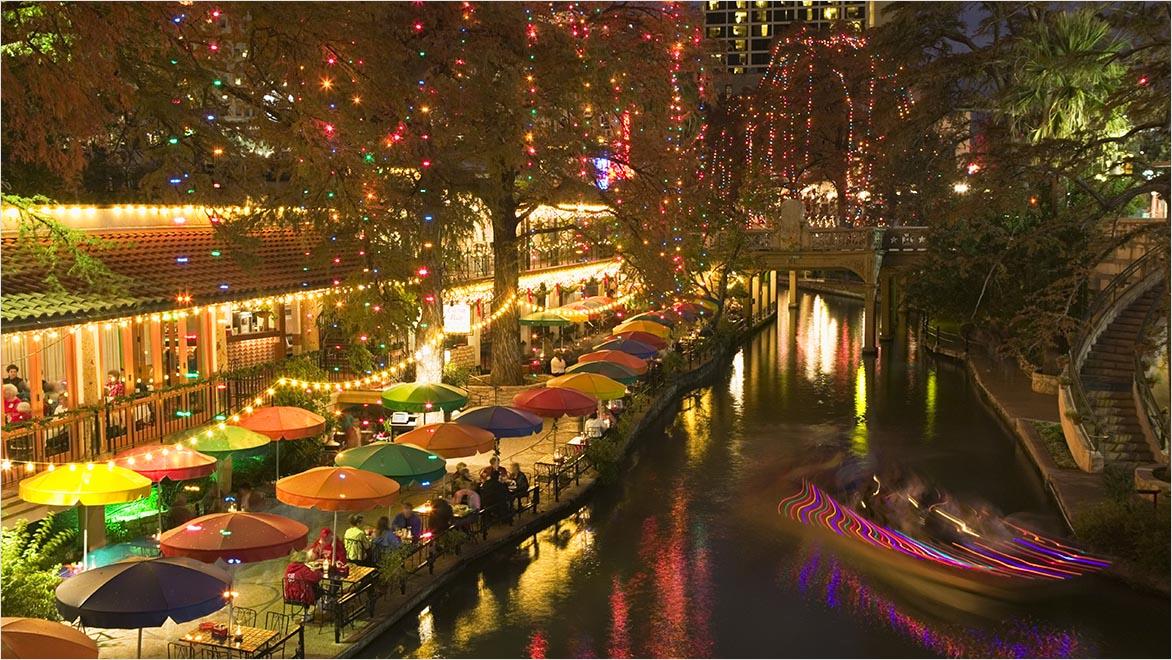& Construction

Integrated BIM tools, including Revit, AutoCAD, and Civil 3D
& Manufacturing

Professional CAD/CAM tools built on Inventor and AutoCAD
Placemaking creates spaces that encourage social interaction.
Placemaking is the process of designing spaces that foster human interaction, creativity, and community. It's about transforming underused areas into vibrant, engaging public places where people can connect. Instead of just focusing on the physical aspects like roads, buildings, or infrastructure, placemaking centers on the experiences people have in these spaces.
For builders and city planners, this means thinking beyond construction blueprints. It means considering how a public square or a park will be used, including how it will look, feel, and function in the everyday lives of the people who visit. Placemaking emphasizes the needs of the people who use the space, making it more human-centered and interactive. It’s an approach that helps create communities, not just physical environments.
A goal of placemaking is integrating sustainable features.
In cities, people often feel disconnected from their surroundings. Tall buildings, busy streets, and the constant hustle can make cities feel impersonal. Placemaking seeks to change that by creating pockets of community and culture within urban landscapes.
For builders and city planners, placemaking involves a shift in thinking. Instead of focusing purely on functionality, you focus on enhancing the human experience in a space.
At the heart of placemaking is the belief that spaces should be designed for the people who use them. When designing a public space, it’s essential to ask: How will people interact with this space? Will it invite them to stay, explore, and engage? Good placemaking always puts people first, prioritizing the comfort, safety, and needs of those who will use the space.
Placemaking thrives when it’s collaborative. Builders, city planners, architects, and local community members should have a voice in shaping a public space. The people who will use the space daily often have the best insights into what’s needed. Engaging the community early on in the planning process ensures the space will meet their needs and become a hub of activity.
A successful placemaking project is flexible. Parks, plazas, and public squares should be designed to support a variety of activities, from outdoor concerts to farmers’ markets. By creating spaces that can serve multiple purposes, you increase the area's value for the community. Versatile public spaces allow for spontaneous social interactions and events, further connecting the community.
Each community is unique, and placemaking should reflect that. Whether it’s through art installations, local food vendors, or cultural events, placemaking can celebrate the identity of a neighborhood. Builders and city planners should aim to incorporate elements that resonate with the local culture, making public spaces feel like a natural extension of the community.
Placemaking should prioritize accessibility. Public spaces need to be welcoming to everyone, regardless of age, ability, or background. This means ensuring spaces are physically accessible (with ramps, wide pathways, and seating) as well as culturally inclusive. Great placemaking designs spaces where everyone feels like they belong.
Placemaking includes everyone by listening to different voices in the planning and design process. The goal is to create spaces that serve people of all ages, backgrounds, and abilities.
Placemaking creates green spaces, parks, and safe, walkable areas that help people live healthier lives. These spaces encourage physical activity, reduce stress, and improve overall well-being, making communities happier and healthier.
By using eco-friendly designs like green roofs, renewable energy sources, and sustainable materials, placemaking can reduce the carbon footprint of entire neighborhoods. It encourages people to walk, bike, and use public transportation, which helps fight climate change.
Well-designed public spaces attract new businesses, visitors, and investments. As a result, property values rise, local shops and restaurants thrive, and more jobs are created. This boosts the economy and benefits both residents and entrepreneurs.
Placemaking can celebrate local traditions, history, and culture, especially in rural or historic areas. This preserves the community’s unique identity, giving residents a sense of pride and belonging.
Good placemaking makes it easier for people to get around. Whether it’s improving sidewalks, bike lanes, or public transit routes, the goal is to reduce the need for cars and make spaces accessible for everyone, including people with disabilities.
Technology has transformed how we approach placemaking. Digital tools like Autodesk’s design software allow planners and builders to create 3D models of public spaces, simulating how they will look and function before they are built. These tools offer significant benefits for placemaking.
Cloud software that offers powerful, easy-to-use, AI-powered tools for pre-design and schematic design. Making the right decisions in the planning phase has never been easier.
Powerful BIM and CAD tools for designers, engineers, and contractors, including Revit, AutoCAD, Civil 3D, Forma Site Design, and more
Plan, design, construct, and manage buildings with powerful tools for Building Information Modeling.
One of the best examples of successful placemaking is the High Line in New York City. Once an abandoned elevated railroad, the High Line has been transformed into a public park that stretches through the city. It’s a great example of how placemaking can turn an unused space into a thriving urban space.
The design of the High Line incorporated all the principles of placemaking:
This masterclass from Autodesk University explains how good decisions in public space design can boost social, environmental, and economic value, while poor planning can have the opposite effect.
This article discusses how the pandemic changed how people interact with public spaces, highlighting the need for more adaptable, health-focused, and sustainable design approaches in our cities.
This case study explores how the city of San Jose is using placemaking to shift from just looking good to creating meaningful experiences for residents and visitors.
Placemaking encompasses a comprehensive approach to designing and revitalizing public spaces, involving physical, social, and cultural elements. Central to placemaking is active community engagement, ensuring that the local population plays a pivotal role in decision-making.
The physical design emphasizes aesthetics, accessibility, safety, and adaptability, fostering an environment accommodating diverse needs. Cultural identity and heritage are integrated through public art and expressions of local history. Programming and activities bring people together, contributing to a vibrant atmosphere. Connectivity,sustainability, mixed-use development, and effective governance further enhance the success of placemaking, creating dynamic and inclusive spaces that improve community well-being.
The theory of placemaking centers on the belief that the design and development of public spaces should prioritize community well-being and advocates for a holistic approach involving active community engagement to ensure spaces reflect local aspirations.
Placemaking emphasizes multifunctionality, accommodating diverse activities and uses to create dynamic and adaptable environments. Cultural and historical relevance are integral, emphasizing preserving and celebrating local identity through public art and design. Activation and programming promote social interaction, while accessibility and connectivity prioritize inclusivity. Sustainability, adaptive governance, and ongoing feedback underscore the theory.
Placemaking is paramount as it plays a pivotal role in enhancing the well-being of communities. Placemaking contributes to social cohesion, community engagement, and a sense of belonging by focusing on the design and activation of public spaces. The economic impact is substantial, attracting businesses and investments while fostering environmental sustainability through thoughtful design.
Placemaking preserves and celebrates local culture and heritage, creating spaces that reflect a community's identity. Additionally, it promotes safety, supports educational and recreational activities, and contributes to urban resilience.
Placemaking can be categorized into four main types: community-led placemaking, where residents actively participate in shaping and implementing initiatives, emphasizing community identity; market-driven placemaking, led by private developers or businesses to create economically successful and commercially viable spaces; government-led placemaking, in which government agencies take the lead in planning and developing public spaces to meet broader urban planning goals; and institutional placemaking, where institutions like universities or cultural organizations spearhead initiatives aligned with their missions.
A notable example of placemaking is the transformation of New York City's High Line, an elevated historic freight rail line turned into a public park on Manhattan's West Side. The project repurposed an abandoned space into a linear park featuring greenery, walking paths, seating areas, and public art installations.
The High Line is celebrated for its innovative approach to urban design, combining nature with an urban environment. It has become a popular and distinctive public space for residents and visitors. The success of the High Line demonstrates how placemaking initiatives can revitalize underutilized areas.
Digital placemaking refers to integrating digital technologies into the design and experience of public spaces; unlike traditional placemaking, which focuses solely on physical aspects, digital placemaking leverages interactive displays, augmented reality, virtual reality, and other technological elements to enhance the qualities of a place.
This concept involves the use of digital tools to engage communities, foster connectivity, and create dynamic and interactive public spaces. Examples include interactive installations, smart infrastructure, digital art, and mobile applications that contribute to a location's overall atmosphere and user experience, blending the physical and digital realms in modern urban environments.
Rural placemaking involves the intentional and community-driven efforts to enhance public spaces in rural areas, aiming to improve the quality of life for residents and promote community engagement. Unlike urban placemaking, which often focuses on densely populated city centers, rural placemaking addresses smaller towns and villages' unique needs and characteristics.
This approach encompasses initiatives such as community gardens, farmers' markets, public art installations, and recreational areas. By fostering economic development, preserving local culture and heritage, and involving residents in the planning process, rural placemaking contributes to the overall well-being and vibrancy of rural communities.
In urban design, placemaking is a deliberate and collaborative approach to shaping public spaces within cities. It involves the thoughtful planning, design, and management of these spaces with a focus on creating dynamic, inclusive, and culturally rich environments. Placemaking goes beyond traditional urban planning by actively engaging the community in the process, incorporating local identity, and fostering a sense of community ownership. The goal is to develop public spaces that not only enhance the physical environment but also encourage social interaction, cultural expression, and community engagement.
Placemaking is the process of designing public spaces that promote human interaction, creativity, and community engagement. It's about turning areas into welcoming environments that bring people together.
Placemaking creates spaces that people want to use, which strengthens communities, boosts local economies, improves public health, and increases safety. It’s essential for making cities vibrant and livable.
Lively public spaces attract foot traffic, which helps local businesses. When more people gather, shop, and socialize in an area, the local economy thrives.
Successful placemaking involves focusing on people, collaborating with the community, creating multi-use spaces, incorporating local culture, and ensuring accessibility for everyone.
Technology, like 3D modeling tools (e.g., Autodesk Fusion), helps planners visualize spaces before they are built, gather input from stakeholders, and make adjustments to improve the design.
Projects like New York’s High Line, Millennium Park in Chicago, and Pioneer Courthouse Square in Portland are all successful placemaking examples that transformed unused areas into thriving public spaces.
Traditional urban planning focuses on infrastructure like roads and buildings. Placemaking, on the other hand, emphasizes the social and cultural needs of the people who will use the space, making it more community-centered.



